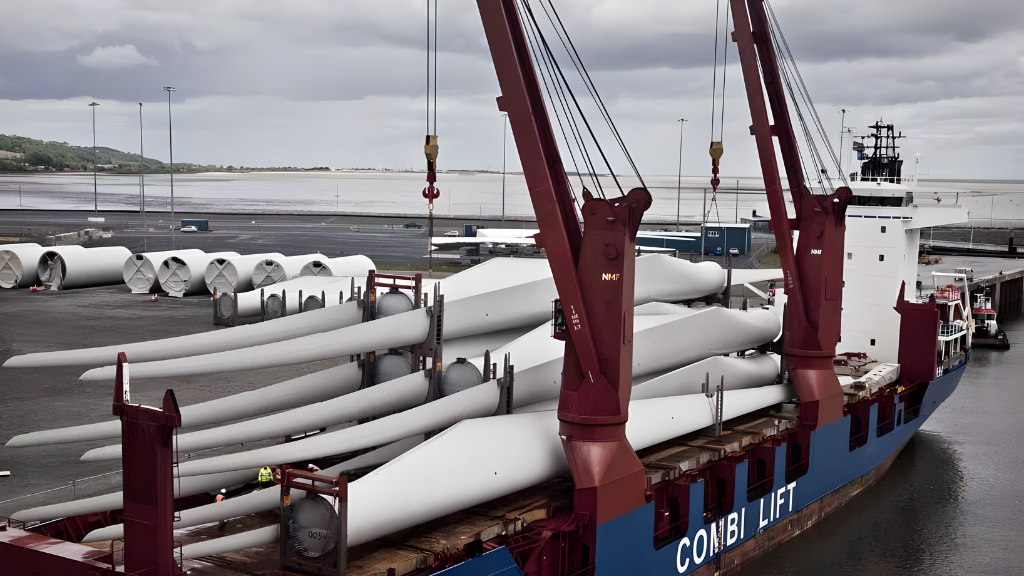As Europe forges ahead in its energy transition, the offshore wind industry plays a pivotal role in this journey. The sector is poised for substantial growth, yet it navigates a sea of challenges and opportunities.
A Wave of Ambition and its Undercurrents
The European offshore wind industry, now more than ever, is at an important point in time. In 2022, we witnessed a surge in offshore wind capacity, with 64.3GW installed globally, and Europe and the Asia-Pacific region leading the way[1]. However, this growth spurt, while commendable, highlights a looming challenge – the impending supply headache. As per Rystad Energy’s analysis, by 2028, the demand for offshore wind turbines will exceed the manufacturing capacity, signalling an urgent need for Europe to scale up production[2].
This situation is made worse by the continuous evolution of turbine technology. Turbines are becoming larger, with capacities reaching almost 10 megawatts (MW) in 2023 and projected to exceed 14 MW in the coming years[3]. The demand for steel, which is essential for constructing these huge towers, is expected to outpace supply, posing a significant hurdle.
The Current State and the Rising Tide of Demand
Last year Europe’s offshore wind capacity reached 32 GW[4]. Although this growth is impressive, it fell short of the EU’s ambitious targets. The offshore wind sector not only needs to maintain its momentum but also address key supply chain issues, such as the production of turbines, cables, and the required port infrastructure.
What’s more, the industry struggles with complexities like cable damage, environmental concerns, and the need for specialised vessels. The adaptation of new technologies like ‘energy islands’ and drone-based maintenance presents opportunities, yet these innovations bring their unique challenges.
Charting the Course Forward
To navigate these waters, Europe needs an organised approach. It’s vital to boost investments in the supply chain, from turbine production to port infrastructure. The EU’s Green Deal Industrial Plan[5] and Net-Zero Industry Act[6], while steps in the right direction, need to be strengthened to effectively support this expansion.
Floating Wind Farms: A Beacon of Hope
An exciting development is the progress in floating offshore wind farms. This technology opens up new horizons, especially for countries with deeper seas. France’s plans to auction a 250 MW floating wind farm off Brittany[7] and the UK’s development projects in this sector signal a promising future.
Navigating a Sustainable Future
As Europe’s offshore wind industry rides the winds of change, it faces a balancing act of leveraging opportunities while addressing its challenges. It’s a journey that requires innovation, collaboration, and strategic planning. With the right policies and investments, Europe can not only meet its ambitious targets but also lead the global transition to a more sustainable energy future.
Footnotes
- https://www.4coffshore.com/news/offshore-wind-industry-faces-challenges-and-oppertunities-as-global-growth-continues-nid28083.html
- https://windinsider.com/2023/06/28/europes-offshore-wind-industry-faces-supply-headache-as-demand-outpaces-manufacturing-capacity-report/
- https://windinsider.com/2023/06/28/europes-offshore-wind-industry-faces-supply-headache-as-demand-outpaces-manufacturing-capacity-report/
- https://windeurope.org/newsroom/news/offshore-wind-investments-recovering-but-still-way-to-go-including-supply-chain/#:~:text=Europe%20installed%202.1%20GW%20of,wind%20capacity%20to%2032%20GW.
- https://commission.europa.eu/strategy-and-policy/priorities-2019-2024/european-green-deal/green-deal-industrial-plan_en
- https://single-market-economy.ec.europa.eu/industry/sustainability/net-zero-industry-act_en
- https://news.europawire.eu/europes-offshore-wind-growth-faces-hurdles-supply-chain-gaps-and-auction-design-challenges/eu-press-release/2023/08/17/09/45/49/120390/


